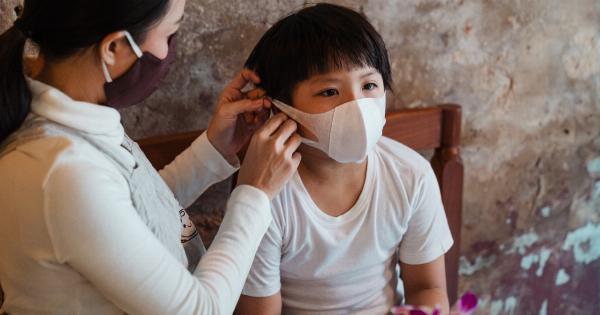The Coxsackie virus is a common viral infection that affects both adults and children. It belongs to the enterovirus family, which also includes the poliovirus and echovirus.
The virus is highly contagious and can spread through direct contact with an infected person, through respiratory droplets, or by touching contaminated surfaces.
1. Fever
One of the most common symptoms of the Coxsackie virus is a fever. The body temperature may rise above 100.4°F (38°C) and can last for several days. It is important to monitor the fever and ensure that the affected person stays hydrated.
2. Sore Throat
A sore throat is another common symptom of a Coxsackie virus infection. The throat may feel scratchy, dry, or painful, making it uncomfortable to swallow. The sore throat usually lasts for a few days and may be accompanied by redness and swelling.
3. Rash
A characteristic rash may appear on the body, particularly on the palms of the hands, soles of the feet, buttocks, and genital area. The rash is often flat and red and may be accompanied by small blisters or ulcers.
This rash is known as hand-foot-and-mouth disease and is a common manifestation of the Coxsackie virus.
4. Headache
Many people infected with the Coxsackie virus experience headaches, which may range from mild to severe. The headache can be accompanied by other symptoms such as fever and body aches. It is important to rest and stay hydrated to alleviate the symptoms.
5. Muscle Pain
Muscle pain, also known as myalgia, is a common symptom of the Coxsackie virus. The affected person may experience generalized muscle aches and discomfort. The muscles may feel tender to touch, and movement may exacerbate the pain.
Rest, fluids, and over-the-counter pain relievers can help alleviate muscle pain.
6. Fatigue
The Coxsackie virus can cause fatigue and a generalized feeling of tiredness. The affected person may feel weak, lethargic, and lack energy. It is important to get plenty of rest and drink fluids to help the body recover.
7. Loss of Appetite
The virus can also cause a temporary loss of appetite. The affected person may have reduced interest in eating and may feel full quickly. It is essential to maintain adequate hydration and ensure a balanced diet to support the immune system.
8. Nausea and Vomiting
In some cases, the Coxsackie virus can cause nausea and vomiting. These symptoms are more common in children but can occur in adults as well. If vomiting occurs, it is crucial to stay hydrated and take small sips of fluids to prevent dehydration.
9. Sore Joints
Joint pain, or arthralgia, can be a symptom of the Coxsackie virus. The affected person may experience discomfort and stiffness in the joints, making movement challenging. Rest and over-the-counter pain relievers can help alleviate joint pain.
10. Conjunctivitis
Conjunctivitis, also known as pink eye, can be a symptom of the Coxsackie virus. The affected person may experience eye redness, itchiness, and discharge.
Good hygiene practices, such as washing hands frequently and avoiding touching the eyes, can help prevent the spread of infection.



























